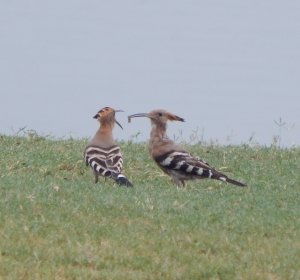There was a time when the mornings of our ancestors were musical, filled with little, shrill but cute chirps. Apart from acting as a morning alarm they signalled humans to begin search for food just like they did, and then relishing it in serenity with the family and younger ones. Yes, I’m talking about our feathered friends, birds or avifauna, with which India is blessed with tremendous diversity of over 1350 species spanning all across its geography. These privileged aviators have a wider role in the ecosystem and are not just meant for enthusiasts like bird watchers or those who study them, the ornithologists.
Birds play a vital role in our environment. Regardless of which species they are, all of them are regarded as indicator species. Why? Because they are indicators of the health and biodiversity of a niche. Birds are also indicators of seasonal and also climatic variations. For instance the common hawk cuckoo also called the brain fever bird’s call is an indication of the arrival of monsoon. They are important in the food web as they scavenge on corpses like vultures and other human wastes. At times they act as agents for seed dispersal, those who feed on fruits like pigeons, barbets, hornbills, flowerpeckers etc. As insectivores beings (swallows, flycatcher species and their likes) and also preying on rats and snakes (raptorial species like various kites, eagles, falcons and buzzards) that wreak havoc in farmlands.
But more important is the fact that birds act as bio-indicators. They are the most sensitive organisms other than “humans” and other animals. Unfortunately for their high metabolism, the pollution in the environment gets reflected by their behaviour and often deaths. The use of toxic chemicals in farms and elsewhere can be seen in the massacre of the birds in adjoining regions. Their oil soaked wings during spills make them, especially the waterfowl species, a liability because they cannot fly away from a predator or for food and even die because of the toxicity in the water body.
In an excursion to Delhi’s maligned Yamuna, the birds that one would find there actually tell you the story of filth and pollution present. Crows, Kites, Mynas (Bank and Common) are birds usually found near sewage drains and places where there is lot of garbage dumped. Actually Kingfishers, dubbed as the greatest anglers, indicate the presence of clear waters which are nowhere to be found near Yamuna. The waterfowl species like duck or goose species, irrespective of the season are not to be found. Even egrets and herons which would be in the scores are countable on your hands and often missing contrary to their round the year presence. Crows, Mynas, Pigeons, Bulbuls are widespread across Delhi. They are supposedly urban birds found where there is less vegetation. Crows are a menace near the garbage dumps that lie unattended in the open by civic authorities. Sparrows have become so rare in the city, it is in itself a story of the plight of urbanisation that has afflicted the diversity of birds. Ideally one should spot woodpeckers, hornbills, barbets, which of course aren’t absent totally but are not found in good numbers, often only heard in cities.
In conclusion, what kind of birds indicates a lot about local biodiversity and cleanliness. Sophisticated instruments may measure the parameters of pollution but birds map the health of an ecosystem. Also their gradual adaptation to an ecosystem indicates the kind of improvements and eco-restoration efforts being employed by the stakeholders to curb pollution and other ill effects of urbanisation. Birds are so vital in the aforementioned regards that you cannot ignore their role in nature. And so those chirps do have purport and implications, all we need is their proper interpretation!

Excellent article. I live in NE of England and we have re-introduced red kites into a semi urban area – there is farmland and woodland where they nest. I’ve noticed a drop in yellowhammer numbers but there are encouraging records of tree sparrows and others which are on the red list.
LikeLike